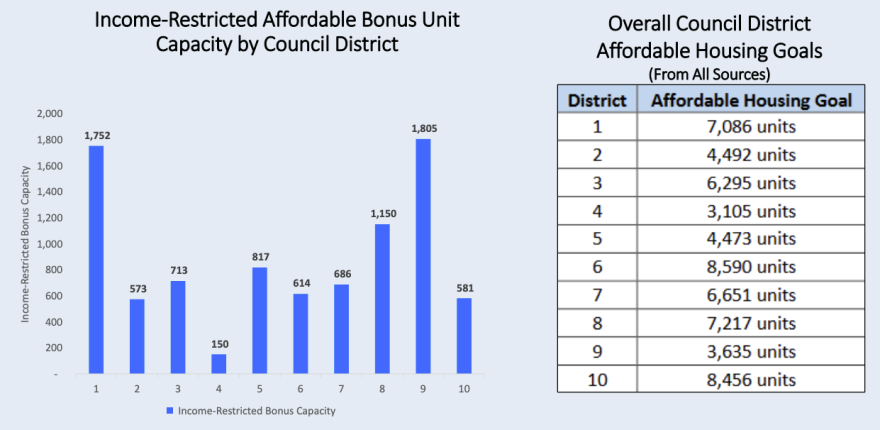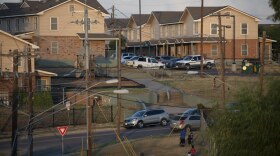The latest iteration of the city’s new land development code could allow builders to put up as many as 397,000 new housing units in Austin, according to a presentation city staff made to Council members Tuesday.
That falls just short of Council’s goal of passing new rules that could yield up to 405,000 new places to live. But that doesn’t mean that’s how many new housing units Austin will be getting over the next few decades.
“Is it accurate to be able to say, even though something is zoned something, the market would probably not allow that to be built out to the full zoning capacity?” Council Member Delia Garza asked.
RELATED | Austin's Got A New (Proposed) Land Code. Here's When And Where You Can Ask Questions.
Staff said that was correct: Even if a property were zoned for 10 units, for example, that doesn't mean 10 units will be built.
Council members held their first public meeting since the city released a draft of the new code Friday afternoon. This is now the fourth version of a new land code; the process went dormant for more than a year after Council members voted to get rid of CodeNEXT, the nearly six-year and $9 million process to revamp Austin’s land development code.
Tuesday’s presentation was full of numbers, giving a broad view of what the code could mean for Austin. Here are some of those numbers:
New Housing Units
In 2017, the City Council passed Austin’s first comprehensive housing plan, which set a goal of building 135,000 new housing units over the next decade, with 60,000 of those being affordable to a family of four making $75,500 a year.
Council upped the ante by asking that this new code (land development codes typically get rewritten every couple of decades) provide for 405,000 new housing units, or three times what the housing plan proposed building in a decade. According to staff, the old code (the one that’s being rewritten) has a housing capacity of 140,000 new units.

Where would these new housing units go? Again, this is just what’s allowable – meaning it’ll still be up to developers and demand to determine where housing gets built. But District 1, which encompasses much of East Austin, would have the largest opportunity for new units, with the ability to build up to 101,934. District 9, which includes the UT campus and parts of downtown, would follow, with 69,374 new housing units under this proposed code.

That Coveted 'Missing Middle'
Of the new homes the code would generate, Council asked that 30% of these be so-called missing middle housing – generally anything smaller than a large apartment building but bigger than a single-family home on a big plot of land. According to builders and city staff, Austin’s current code makes it difficult to build this kind of housing.
The proposed code falls short of this, with an estimated 18% of new housing in that missing-middle category. But subtract the new homes the city expects to get through an affordable housing bonus program (see below), and staff estimates they’ve met their goal.

Affordable Housing Units
Staff estimates the new code could produce as many as 9,000 homes for low-income residents – but this assumes developers will opt into a city inventive program.
It’s illegal to require developers to build affordable housing in Texas, so the new code includes programs where the city would relax height or density restrictions, for example, in exchange for builders making a percentage of new apartments affordable to families who earn less than the median income in Austin.
Erica Leak, a manager with the city’s Neighborhood Housing and Community Development department, acknowledged that 9,000 affordable housing units is far from the 60,000 units Council asked for in the housing plan.
“They are very ambitious affordable housing goals and at the time they were adopted we were clear that they were very ambitious,” she said. “There’s no way that an optional incentive program will ever be able to produce a sufficient number of income-restricted units.”
The city also gets income-restricted housing through federal tax credit projects.
With the city’s incentive program, the most affordable housing could get built in District 9, with an estimated 1,805 homes affordable to a family of four making no more than $75,500 a year.

Council members are scheduled to take an initial vote on the new code in December. Until then, the public has several chances to ask questions and weigh-in on the code.





